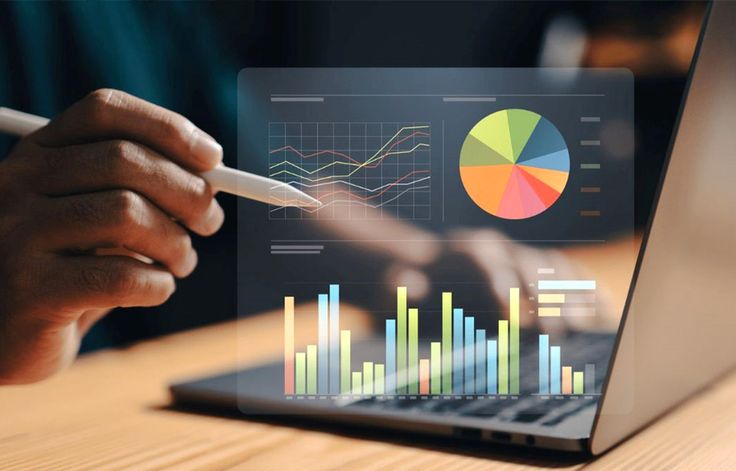In the ever-evolving world of digital marketing, what once seemed ineffective can often turn into a game-changing opportunity. This is particularly true in higher education marketing, where long conversion cycles, multiple decision-makers, and complex customer journeys make finding the right advertising mix a challenge.
At Level Agency, we believe in relentless testing and iteration. Even when a platform fails to deliver results the first time, we don’t simply walk away. We keep testing, learning, and optimizing because digital marketing tools evolve, algorithms get smarter, and what didn’t work yesterday might work tomorrow. One of the best examples of this? Google’s Performance Max (PMAX) campaigns.
The Early PMAX Struggle in Higher Education
When Google first introduced PMAX, its promise was exciting: an AI-driven campaign that automatically optimized ad placements across Search, Display, YouTube, and Gmail to maximize performance. For e-commerce businesses with quick, transactional sales, PMAX delivered impressive results. However, for higher education institutions—where decision-making takes weeks or even months—PMAX struggled.
The issue was simple: PMAX was designed for rapid, single-touchpoint conversions. Higher education prospects don’t operate that way. They research programs, engage with multiple channels, speak to admissions counselors, and weigh financial aid options before making a decision. The PMAX algorithm wasn’t built to nurture these long, multi-touch conversion paths, leading to subpar results in our initial tests.

Why We Kept Testing
Despite the early challenges, we didn’t abandon PMAX entirely. Why? Because digital advertising platforms are always evolving, and we saw promising updates in Google’s approach.
Most notably, Google has re-engineered PMAX to better accommodate full-funnel marketing strategies. New features like VIP access to product owner based on our premier google status allow us to integrate deeper audience signals, align bidding strategies with long-term engagement goals, and use offline conversion data to refine targeting. These improvements gave us reason to revisit PMAX with fresh eyes.
Early Wins from PMAX Testing
As we reintroduced PMAX into our higher education campaigns, we saw compelling early successes.
- Unlocking New Audiences: For programs that had already maxed out their search impression share, PMAX helped us expand reach efficiently—bringing in new prospective students without significantly increasing cost-per-lead (CPL).
- Better Long-Term Engagement (LTE): Unlike traditional display and YouTube campaigns, PMAX was able to generate higher engagement rates with students who stayed in the funnel longer, showing increased intent and likelihood to apply.
- More Intelligent Budget Allocation: With AI-driven optimizations, PMAX started directing ad spend toward the highest-value prospects, improving lead quality over time.
These wins proved that the PMAX of today is not the same as the PMAX of yesterday.
What This Means for Higher Education Marketing
The resurgence of PMAX in education isn’t just about one tool—it’s a reflection of our core marketing philosophy. Just because something didn’t work before doesn’t mean it won’t work now. Platforms improve. Algorithms get smarter. And if you’re not constantly testing, you’re leaving opportunities on the table.
At Level Agency, we don’t just follow trends—we challenge assumptions and push boundaries. When the digital landscape shifts, we adapt. And when an old tool gets a new upgrade, we don’t dismiss it; we re-evaluate it.

The Role of AI in PMAX Optimization
Artificial intelligence is at the core of PMAX’s evolution. By leveraging AI-driven insights, we can now feed Google’s algorithm with higher-quality signals, such as offline conversion data and predictive lead scoring. This means that instead of optimizing for quick, low-intent leads, PMAX can now prioritize high-intent students who are more likely to enroll.
Additionally, AI’s ability to analyze vast amounts of data in real time allows PMAX to dynamically adjust bids, placements, and creative strategies based on changing user behavior. This level of automation is invaluable in the fast-moving digital space, where human-driven optimizations alone are no longer enough to stay ahead.
Final Thoughts: Never Stop Testing
If there’s one takeaway from our PMAX journey, it’s this: Never write off a tool just because it didn’t work the first time. Digital marketing is about adaptability, and the only way to unlock new growth opportunities is to keep testing, learning, and optimizing.
For higher education marketers looking to maximize their digital campaigns, the message is clear: The landscape is always changing. The question isn’t whether past failures define the future—it’s whether you’re willing to re-evaluate and find new ways to win.
Want to learn more about how we’re using PMAX and AI-driven strategies to optimize student enrollment? Let’s talk.








